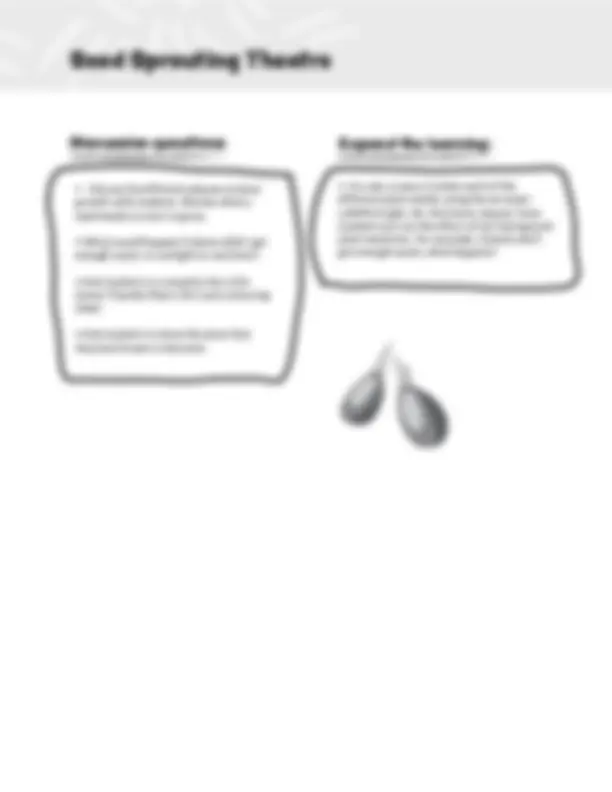



Study with the several resources on Docsity

Earn points by helping other students or get them with a premium plan


Prepare for your exams
Study with the several resources on Docsity

Earn points to download
Earn points by helping other students or get them with a premium plan
Community
Ask the community for help and clear up your study doubts
Discover the best universities in your country according to Docsity users
Free resources
Download our free guides on studying techniques, anxiety management strategies, and thesis advice from Docsity tutors
A plant's first step in the plant cycle is germination. For a seed to germinate, it needs to be warm and watered. The next stage is a sprout and roots will ...
Typology: Study notes
1 / 3

This page cannot be seen from the preview
Don't miss anything!


Students will act out the process of a seed sprouting. This is a great activity for teaching the life cycle of plants, and can be used as a body break from other activities!
A plant's first step in the plant cycle is germination. For a seed to germinate, it needs to be warm and watered. The next stage is a sprout and roots will start to break through the outer shell of the seed. These provide the necessary parts of a plant to absorb water and nutrients from the soil. This stage is the seedling stage. From the seedling stage comes the vegatative stage, which brings more leaves and longer roots. From there budding will start, closed off buds will appear on your plant. Shortly thereafter is when the plant will start to flower and those buds will open up. The last stage is the ripening, when everything has opened up and blossomed! Refer to our life cycle handout.
Grades: K - 2^ Time: 5 - 10 mins.
- No materials needed for this! However, if you want to add in props, you can. Use a watering jug to make it more fun.
Tell the children to start curled up like a sleeping seed. (You could also ask them to think about what plant they would like to sprout into! It could be fun to try and guess what plants they chose!)
Recite the following stages of the plant life cycle, and encourage students to follow along as their plant begins to grow.
“We are starting off as little seeds that just got planted in the dirt! Make sure you are curled up really tight! You will need warmth and water to sprout! I’m going to come around and put some water on you all and you will just start to sprout just a tiny bit! Just peek your head out of the ball you are curled up in just a little bit!” (Water them all)
“Now you’ve grown a little sprout head and little baby roots! Our roots are going to help us get nutrients and water from the soil, so that we can grow! I’m going to come around and water you all again and then we will see how much more we grow! Now take your arms out of the shell and make little leaves! We are still very small though so stay crouching! (Water them again)
“We now emerge from the soil. We now have little leaves and longer roots to help us grow bigger and stronger! The sun comes out and starts to spread our arms a little wider soak up the sun. We need the sunlight and some of the warmth from the sun to grow.”
“Now feel the wind as it moves you. The wind helps you grow a strong stem. As you grow, make sure you aren’t crowded around other plants - you need space to grow.”
“Now we start to grow our flowers, first starting with little buds. (Water them again) Put your hand into a fist. This is your flower bud forming! Remember it’s still closed!”
We have a flower bud but we may need to continue growing. Grow as tall as you can now and reach out wide.! We are going to grow a little bit taller and our hand is going to open up and start to bloom! (Water them again)
“We are almost there, we just have to grow really tall and big! Our flowers are blooming and our plant is very tall now! (Water one last time) Now we are big full healthy plants!”